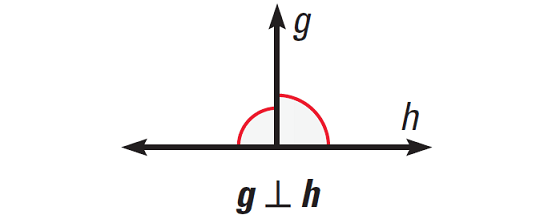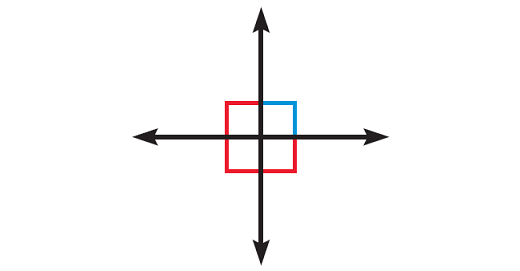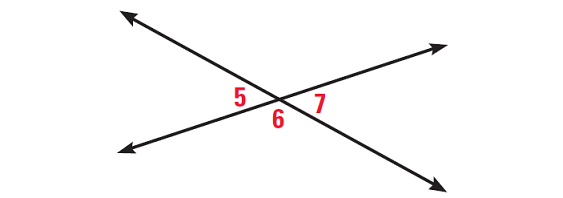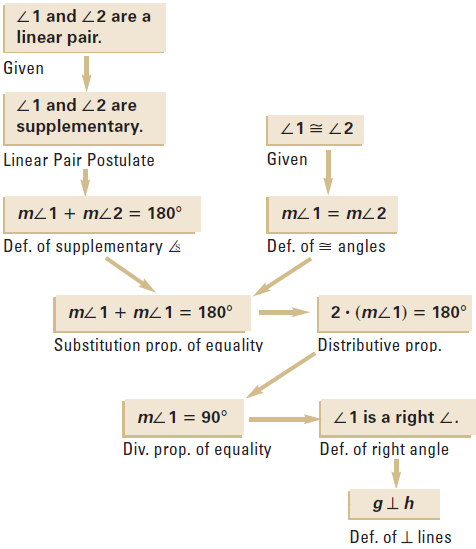PROOF AND PERPENDICULAR LINES
Types of Proofs
(i) Two - Column Proof :
This is the most formal type of proof. It lists numbered statements in the left column and a reason for each statement in the right column.
(ii) Paragraph Proof :
This is the most formal type of proof. It lists numbered statements in the left column and a reason for each statement in the right column.
(ii) Flow Proof :
This type of proof uses the same statements and reasons as a two-column proof, but the logical flow connecting the statements is indicated by arrows.
Results about Perpendicular Lines
Result 1 :
If two lines intersect to form a linear pair of congruent angles, then the lines are perpendicular.
The diagram given below illustrates this.

Result 2 :
If two sides of two adjacent acute angles are perpendicular, then the angles are complementary.
The diagram given below illustrates this.

Result 3 :
If two lines are perpendicular, then they intersect to form four right angles.
The diagram given below illustrates this.

Example 1 :
In the diagram given below,
∠5 and ∠6 are a linear pair
∠6 and ∠7 are a linear pair

Prove ∠5 ≅ ∠7 using two-column proof, paragraph proof and flow proof.
Solution :
Two-column Proof :
|
Statements ∠5 and ∠6 are a linear pair ∠6 and ∠7 are a linear pair ∠5 and ∠6 are complementary ∠6 and ∠7 are complementary ∠5 ≅ ∠7 |
Reasons Given Linear pair postulate Congruence Supplements theorem |
Paragraph Proof :
Because ∠5 and ∠6 are a linear pair, the linear pair postulate says that ∠5 and ∠6 are supplementary. The same reasoning shows that ∠6 and ∠7 are supplementary. Because ∠5 and ∠7 are both supplementary to ∠6, the congruent supplements theorem says that ∠5 ≅ ∠7.
Flow Proof :

Example 2 :
In the diagram given below, ∠1 and ∠2 are congruent and also a linear pair. Using flow proof, prove that the lines g and h are perpendicular.

Solution :

Example 3 :
If two sides of the adjacent acute angles (2x + 3)° and (4x - 6)° are perpendicular, find the value of x.
Solution :
According to result 2, if two sides of two adjacent acute angles are perpendicular, then the angles are complementary.
So, we have
(x+3)° + (2x-6)° = 90°
x + 3 + 2x - 6 = 90
Simplify.
3x - 3 = 90
Add 3 to both sides.
3x = 93
Divide both sides by 3.
x = 31
Kindly mail your feedback to v4formath@gmail.com
We always appreciate your feedback.
©All rights reserved. onlinemath4all.com
Recent Articles
-
Solving the HARDEST SAT Math Questions ONLY using Desmos
Nov 04, 25 07:33 AM
Solving the HARDEST SAT Math Questions ONLY using Desmos -
10 Hard SAT Math Questions (Part - 32)
Oct 30, 25 08:57 AM
10 Hard SAT Math Questions (Part - 32) -
10 Hard SAT Math Questions (Part - 31)
Oct 27, 25 10:32 AM
10 Hard SAT Math Questions (Part - 31)
